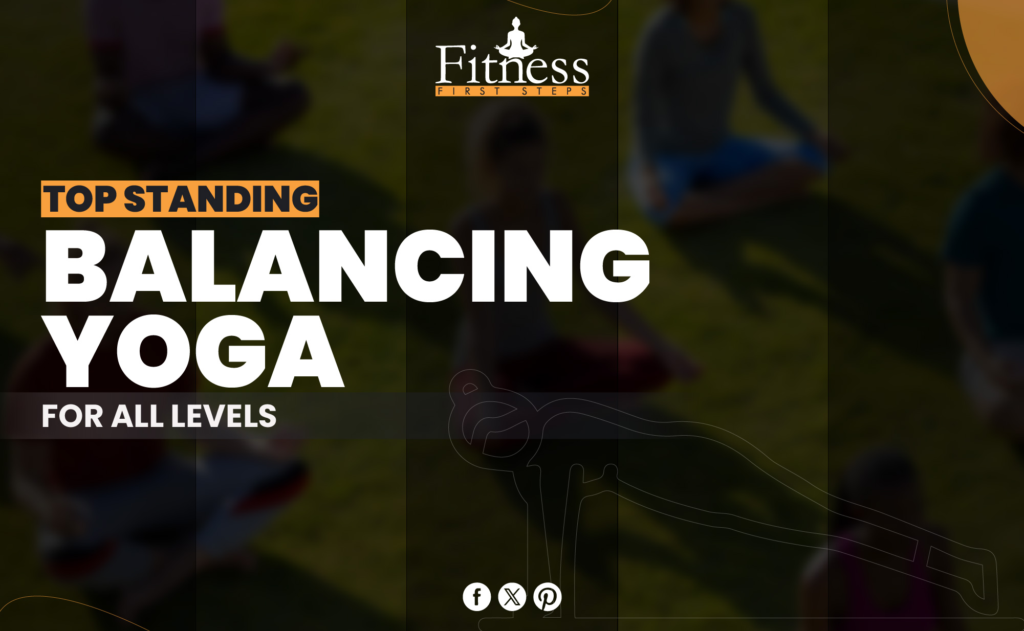Introduction
Prenatal yoga is a practice made just for pregnant women. Its gentle stretching, focused breathing, and mental balance are all part of this straightforward type of exercise, which is meant to support the body’s changing needs while pregnant and improve health and flexibility in general.
You can’t say enough good things about prenatal care. It includes everything done to ensure the mother and the baby are healthy during pregnancy. Regular check-ups, nutrition help, and physical activity like prenatal yoga are all important parts of complete prenatal care.
Prenatal yoga is good for the body, mind, and spirit. It prepares pregnant women for giving birth, helps them deal with worry, and keeps their minds strong. In this way, it’s a full practice for pregnancy health.
You can read more about integrative yoga therapy.
Understanding Prenatal Yoga
What is Prenatal Yoga?
Carefully designed for pregnant women, prenatal yoga is gentle yoga. It emphasizes safe, healthy positions for all phases of pregnancy. This yoga emphasizes breathing methods to reduce labor pains and stress. It also involves stretching to improve flexibility and strengthening exercises designed to support pregnancy’s many changes.
This yoga prepares the body and mind for labor and delivery, bringing serenity, focus, and readiness for parenthood. Due to its holistic approach, it is suggested that pregnant women seek well-being during this transitional time.
How Does It Differ from Regular Yoga?
There are a few main ways that yoga for pregnancy is different from regular yoga that are meant to meet the needs of pregnant women:
- Modifications and Props: To ensure the comfort and safety of the mother and the baby, props like bolsters, blocks, and blankets are often used to change poses in prenatal yoga classes. These changes make the practice more accessible by helping balance issues and providing support.
- Focus on Specific Muscle Groups: The exercises in pregnant yoga are designed to work on muscle groups that are very important for pregnancy and giving birth. The pelvic floor, hip, and abdominal core muscles must be strengthened as part of this. These muscles support the body during pregnancy and help with labor.
- Breathing Techniques: Prenatal yoga focuses more on exercises that help you breathe. These methods improve circulation and lung capacity, lower stress, and help with pain management, especially during labor.
- Avoiding Intense Abdominal Workouts: When you’re pregnant, it can be bad for your health to do intense abdominal exercises or poses that require you to lie on your back for extended amounts of time.
- Community and Support: Expectant mothers can also get to know each other and help each other through prenatal classes. Talking about your experiences and giving each other advice in a safe space can be very helpful during pregnancy.
Importance of Choosing the Right Instructor and Class
Finding the right pregnant yoga teacher and class is significant for the safety and health of both mother and baby. When choosing a pregnant yoga class, think about the following:
- Certified Prenatal Yoga Instructor: Ensure the yoga teacher
- r is qualified to teach prenatal yoga. Because they are specialists, they know everything there is to know about what pregnant women need and can safely lead you through the processes.
- Experience: Look for a teacher who has worked with pregnant women. Teachers with a lot of experience will know about women’s most common problems and worries during pregnancy and can adapt the practice to fit your needs.
- Class Size: If possible, choose classes that aren’t too big. A smaller class size means that each student can get more one-on-one care from the teacher, who can better monitor your form and make the right changes.
- Class Atmosphere: The classroom should have a friendly and helpful vibe. A positive, caring setting can improve your pregnancy and help you feel better emotionally.
- Feedback from Other Mothers: Ask other moms or people who work in prenatal care for suggestions. Personal recommendations help you understand how the teacher teaches and how the class is run.
- Safety Measures: The teacher should prioritize safety by keeping students out of dangerous poses and showing them how to balance and breathe properly.
- Online Options: If you can’t attend in-person classes, you might want to look into online prenatal yoga lessons taught by certified teachers. Make sure that the online tool lets you interact with others to get personalized help and advice.
Physical Benefits of Prenatal Yoga
Prenatal yoga has many health benefits for pregnant women, making it a big part of their overall health. These perks make pregnancy more comfortable and prepare the body for work and delivery.
Alleviating Common Pregnancy Discomforts
Some of the most common discomforts that come with being pregnant can be eased with prenatal yoga:
- Back Pain Relief: Prenatal yoga helps ease back pain by improving posture and building muscle in the back through gentle stretching and strengthening routines.
- Reducing Swelling in Limbs: Yoga improves circulation, which helps the feet and legs stay flat during pregnancy.
- Easing Nausea: Some exercises and breathing techniques can help you deal with nausea, which is common in the early stages of pregnancy.
- Improved Digestion: Prenatal yoga’s gentle movements and stretches can help with digestion and ease stomach pain that often arises during pregnancy because of hormonal changes and physical stresses.
- Better Sleep: Regular pregnant yoga practice can help you sleep better by lowering your stress, easing your body’s pain, and putting you in a relaxed state, making it easier to fall asleep.
Strengthening the Body for Labor and Delivery
Prenatal yoga not only helps with the pain that comes with being pregnant, but it also gets the body ready for labor and delivery:
- Improving Flexibility and Endurance: Consistent practice improves stamina and flexibility, which are crucial during labor.
- Strengthening Pelvic Floor Muscles: Concentrating on the pelvic floor facilitates a more rapid recovery following childbirth and contributes to controlling incontinence concerns.
- Enhancing Breath Control: Learning how to control your breath through pregnant yoga can help you deal with pain during labor and improve the whole experience of giving birth by helping you relax and concentrate.
- Boosting Stamina: Prenatal yoga is an easy but steady way to work out that can help pregnant women build their stamina, making it easier for them to handle the demands of labor and birth.
- Mental Preparation for Childbirth: Regular prenatal yoga practice includes mindfulness and meditation, which can help prepare mentally for labor, create a good mentality, and reduce childbirth anxiety.
Enhancing Posture and Balance
The mother’s center of gravity shifts as the baby grows, so improving her stance and balance is essential. In this way, prenatal yoga is helpful because:
- Promoting Awareness of Body Alignment: Regular practice makes you more aware of your body’s alignment and stance, which helps you change how you move and ease the strain.
- Strengthening Core Muscles: Prenatal yoga helps support the extra weight and improves balance by gently building muscle in the lower back and abdomen.
- Reducing the Risk of Falls: Regular practice can help improve your balance and agility, lowering your risk of falling and protecting you and your baby.
- Boosting Energy Levels: Regular prenatal yoga classes can help you feel more energetic by improving your body’s circulation and oxygenation. This energy boost is beneficial as the pregnancy progresses and tiredness often worsens.
- Promoting Better Sleep: Prenatal yoga can enhance sleep quality by relieving common discomforts, lowering stress and anxiety, and relaxing. The expectant mother’s health and body’s needs require better sleep.
Mental and Emotional Benefits of Prenatal Yoga
Although pregnant women do prenatal yoga to improve their physical health, it also significantly impacts their mental and emotional health.
Stress Reduction and Relaxation Techniques
Relaxation and stress-reduction strategies are essential for pregnant women. Deep breathing, meditation, and mild stretching reduce stress and promote calm. Sleep quality is often reduced during pregnancy owing to physical discomfort and anxiety. These approaches can help.
Building a Connection with the Baby
Prenatal yoga provides a unique opportunity to bond with the unborn child. Focused breathing and thoughtful movements help women notice their baby’s movements. This yoga session can help pregnant mothers bond with their babies before birth.
Preparing Mentally for Labor and Motherhood
Another benefit is mental preparation for labor and motherhood. Prenatal yoga helps women cope with labor and delivery by boosting positivity. Sharing anxieties and experiences in a pleasant prenatal yoga session reduces isolation and parenthood anxiety. Before childbirth and parenting, yoga can enhance confidence and empower expectant mothers.
Enhancing Emotional Resilience
Prenatal yoga helps expected moms cope with pregnancy and early motherhood by increasing emotional resilience. Yoga’s mindfulness practice helps people manage hormone shifts and mood swings by focusing on the present and accepting their emotions. Mindfulness and acceptance might help you feel calmer and stronger during pregnancy and after.
Support Network Development
Prenatal yoga sessions help new mothers find support. These conversations can help pregnant women feel connected and less lonely. Sharing pregnancy and parenting stories and suggestions with others can reassure, boost confidence, and create lasting friendships.
Social Benefits of Prenatal Yoga
Prenatal yoga is good for more than just your physical and mental health. It’s also great for your social life and benefits pregnant women.
Building a Supportive Community of Expectant Mothers
Prenatal yoga programs foster a supportive community for new mothers. Empathy and understanding create a secure space for sharing and learning from each other in our community. Joining a pregnancy group lowers isolation and promotes a sense of community.
Sharing Experiences and Tips for Pregnancy
Prenatal yoga courses offer pregnancy information and observations. These personal stories and advice cover everything from morning sickness to labor preparedness. Sharing advice helps pregnant women handle pregnancy’s obstacles.
Creating Lasting Friendships with Other Moms-to-Be
Prenatal yoga can form lifetime bonds. These relationships offer emotional support and companionship beyond yoga classes during pregnancy, birth, and motherhood. It also fosters a valuable support system for pregnant women, enhancing their health and happiness.
Fostering a Healthy Mindset Towards Body Image
Prenatal yoga also helps pregnant women accept body image changes. Expectant mothers appreciate their bodies’ power and capabilities through moderate stretches and poses. Accepting and celebrating the body’s changes can boost self-esteem and lessen pregnant body image stress.
Enhancing Communication with Healthcare Providers
Regular prenatal yoga helps pregnant women see doctors. By understanding their body and discomforts, they may convey their sentiments effectively. Better communication allows mothers-to-be to receive customized care, improving pregnancy and delivery.
Safety Considerations and Precautions
Prenatal yoga is essential for the safety of the pregnant woman and the growing child. Specific steps can lower the risks and increase the benefits of the practice.
Consulting with a Healthcare Provider before Starting Prenatal Yoga
Pregnant women should see their doctor before practicing. This guarantees that yoga is safe for their pregnancy. Doctors can advise on precautions based on the patient’s health history and pregnancy development.
Modifications for Different Stages of Pregnancy
Certain yoga poses and routines may become hazardous or uncomfortable during pregnancy. Each trimester requires yoga modifications to meet body needs. Certified prenatal yoga instructors can make these adjustments for participant safety and comfort.
Signs to Stop or Modify Yoga Practice
In prenatal yoga, we must listen to our bodies. Dizziness, shortness of breath, headache, or soreness may indicate a practice change. To protect the mother and baby, pregnant women should report any symptoms to their instructor and doctor.
Avoiding Overstretching
Ligaments and joints relax for birth as relaxin rises during pregnancy. Increased flexibility increases overstretching and injury risk. Instead of deep positions, prenatal yoga emphasizes stability and support through mild stretching. Allowing pregnant women to move comfortably prevents hyperextension.
Importance of Hydration and Proper Nutrition
Safe prenatal yoga involves proper nutrition and hydration. Overheating and tiredness from dehydration can endanger pregnant women. Hydrate before, during, and after yoga. A modest, nutritious snack before class can restore energy without causing nausea or discomfort.
Tips for Starting Prenatal Yoga
Prenatal yoga can be beneficial if you want to have a safe pregnancy. It can help your body feel better and make you stronger emotionally. Here are some essential tips you should know to get started on this rewarding path:
Finding a Reputable Prenatal Yoga Class
Safe and pleasurable prenatal yoga requires choosing the correct class. Lessons led by prenatal yoga-certified instructors are available. Your fitness level and pregnancy stage should determine your class. Research nearby studios or ask healthcare practitioners or moms-to-be to discover a supportive and personalized yoga setting.
Investing in Appropriate Yoga Gear
Comfortable and safe prenatal yoga equipment is needed. A thick yoga mat will support your joints. Pleasant clothing that breathes and regulates body temperature is also enjoyable. Buy bolsters, blocks, and straps to support and tweak yoga poses.
Listening to the Body and Practicing Self-Care
The importance of listening to your body during pregnancy is expanding. Yoga during pregnancy shouldn’t hurt. Understand your body’s limits and adjust poses or take breaks. Prenatal yoga should boost your health, not push you. Holistic prenatal yoga incorporates awareness and self-care off the mat—rest, nutrition, and hydration.
Starting Slow and Gradually Increasing Intensity
Prenatal yoga beginners should start with slow, gentle movements and increase intensity as comfort and fitness levels improve. Avoiding strain and injury ensures a positive and beneficial experience. Start with shorter sessions and increase them as your body responds to the workouts. Pacing makes prenatal yoga safer and more fun.
Incorporating Mindfulness and Breathing Techniques
Mindfulness and careful breathing boost prenatal yoga’s effects. Deep, regulated breaths lower tension, enhance infant oxygen flow, and manage labor pain. Meditation can also soothe and prepare the body for labor by increasing awareness and connection. These yoga methods can help manage pregnancy and labor’s physical and mental challenges.
Conclusion
Prenatal yoga meets expectant mothers’ particular demands at this critical time. It improves flexibility, strength, and endurance and reduces tension and anxiety. The practice helps expecting moms learn breathing and relaxation techniques for labor and childbirth, improving well-being.
This guide seeks to inform and inspire prenatal yoga practitioners. We encourage pregnant moms to try this yoga by stressing its safety, adaptations, and advantages. Try prenatal yoga to feel more relaxed and mindful.
Prenatal yoga encourages women to connect with their bodies, babies, and motherhood. It emphasizes self-care during such a momentous time. We recommend this to all pregnant women for its physical and mental health advantages. Pregnancy empowerment through mindfulness, exercise, and self-care benefits you and your baby.




